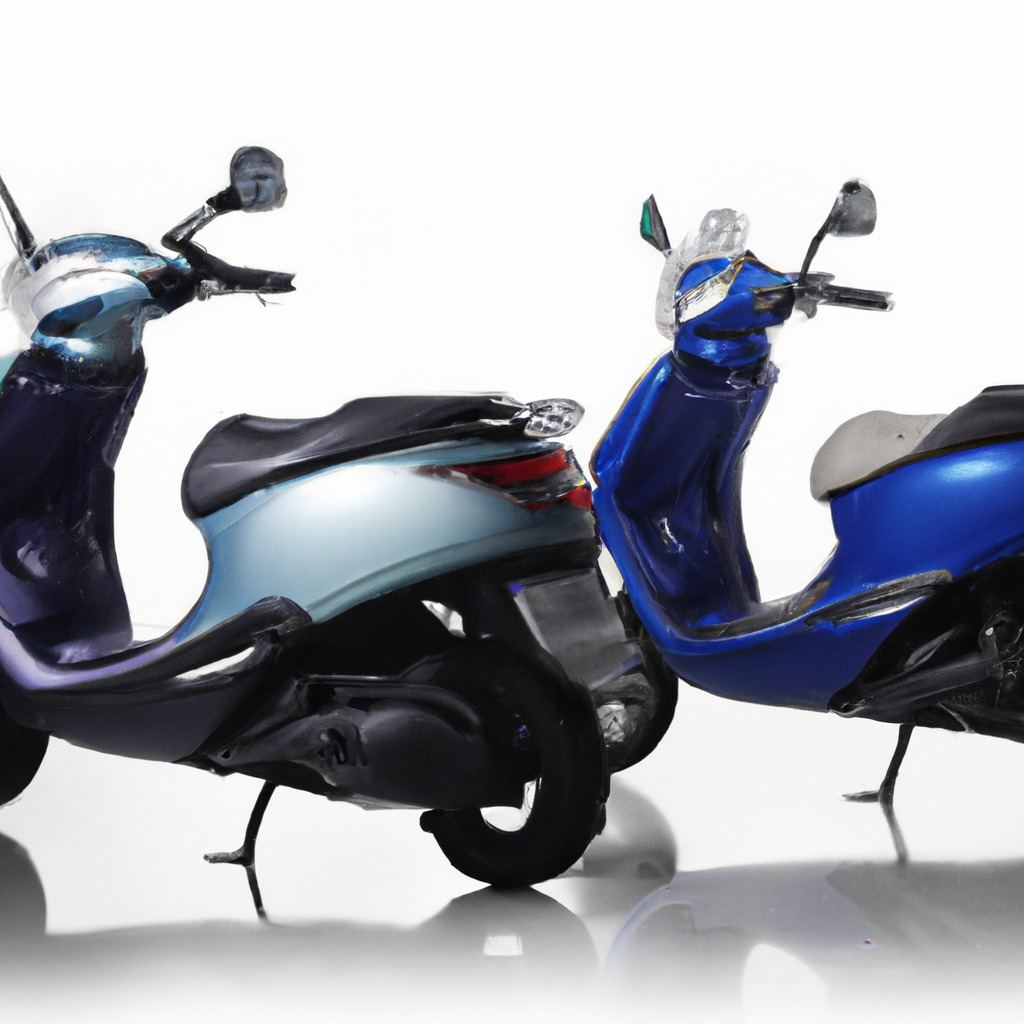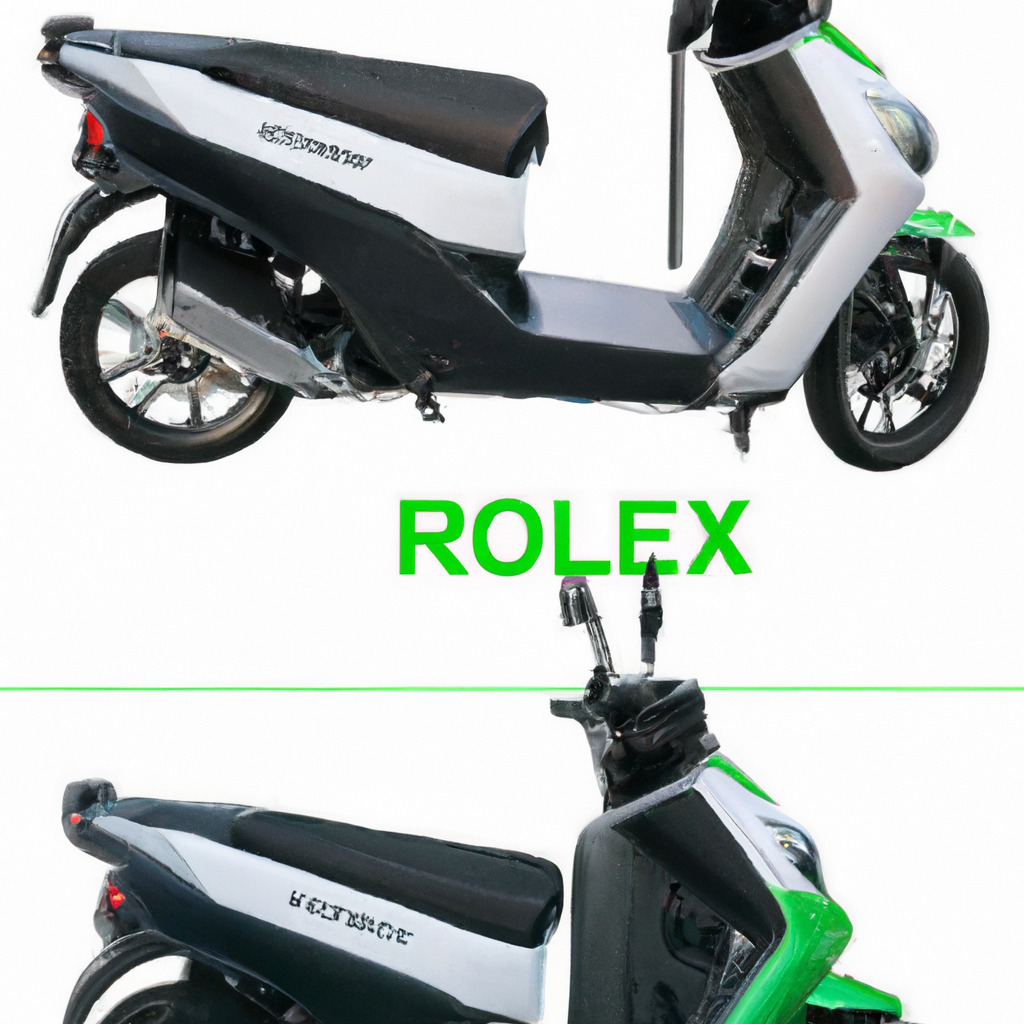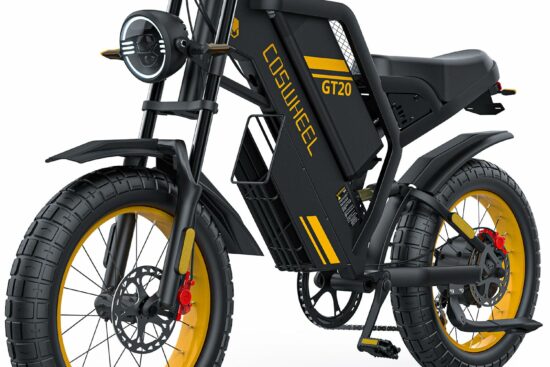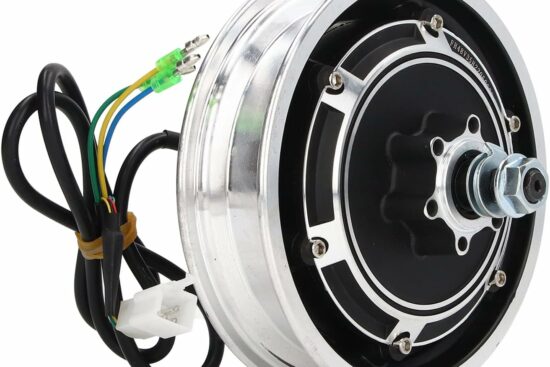
In the realm of eco-friendly transportation options, deciding between an electric bike and an electric scooter can be a perplexing task. Both offer unique advantages and cater to different preferences. In this article, we will explore key factors to consider when making this decision, such as commuting needs, terrain, cost, and overall convenience. By examining these factors, you will be equipped with the knowledge necessary to make an informed choice between an electric bike and an electric scooter that aligns with your lifestyle and transportation requirements.
Cost
Initial Cost
When considering the cost of an electric bike or scooter, it is essential to compare the initial expenses of both options. Electric bikes tend to be more expensive upfront than electric scooters. On average, electric bikes can range from $1,000 to $5,000, depending on the quality and features of the model. In contrast, electric scooters typically cost between $500 and $2,000. However, keep in mind that prices may vary based on factors such as brand, battery capacity, and additional accessories.
Maintenance Cost
Another crucial aspect to consider is the long-term maintenance cost of electric bikes and scooters. Electric bikes generally require less maintenance than scooters due to their simpler design and fewer moving parts. maintaining an electric bike typically involves regular charging and occasional check-ups, which can be done at home or at a local bicycle shop. Electric scooters, on the other hand, may require additional maintenance such as tire changes, brake adjustments, and occasional battery replacements. Consequently, it is essential to factor in the potential maintenance cost over time when making your decision.
Fuel Cost
One major advantage of both electric bikes and scooters is their low fuel cost. Unlike traditional gasoline-powered vehicles, electric bikes and scooters are powered by rechargeable batteries. This means that they can be charged using standard electrical outlets, significantly reducing fuel expenses. The cost of charging an electric bike or scooter depends on the size of the battery and the electricity rates in your area. However, in general, the cost of electricity needed to charge these vehicles is substantially lower compared to the cost of gasoline. Ultimately, both electric bikes and scooters offer significant savings in terms of fuel expenses.
Range
Electric Bike Range
When it comes to range, electric bikes have an advantage over electric scooters. The range refers to the distance the vehicle can travel on a single charge. Electric bikes typically have larger batteries than scooters, allowing for longer rides before requiring a recharge. The average electric bike can cover a range of 40 to 80 miles per charge, depending on the battery capacity and terrain conditions. However, it is important to note that riding at higher speeds or on hilly terrains can decrease the range of an electric bike. Therefore, consider your expected riding distance and terrain when evaluating the range offered by different electric bike models.
Electric Scooter Range
While electric scooters may not have the same range as electric bikes, they still offer reasonable distances on a single charge. The average electric scooter can cover a range of 15 to 30 miles per charge, depending on factors such as battery capacity, rider weight, and terrain conditions. Unlike electric bikes, scooters are typically designed for shorter commutes and urban travel. If your daily transportation needs involve shorter distances, an electric scooter’s range may be more than sufficient for your requirements.

Speed
Electric Bike Speed
Electric bikes and scooters have different speed capabilities that should be considered based on your intended use. Electric bikes generally offer higher speeds compared to electric scooters. Most electric bikes have a maximum speed of around 20 to 25 miles per hour, allowing for faster travel and smoother rides. These higher speeds can be beneficial for longer commutes or when traveling on roads with higher speed limits. However, it is important to familiarize yourself with local traffic laws and regulations regarding electric bike speeds, as there may be restrictions in certain areas.
Electric Scooter Speed
Electric scooters, on the other hand, tend to have lower maximum speeds compared to electric bikes. The average electric scooter can reach speeds of around 15 to 20 miles per hour. While these speeds may be slightly lower, they are generally sufficient for urban commuting and shorter trips. In most cities, electric scooters are classified as low-speed vehicles, making them suitable for inner-city travel and adhering to local speed limits. When deciding between an electric bike and an electric scooter, consider the speed requirements of your daily commute and whether higher speeds are necessary.
Terrain
Hilly Terrain
If you frequently encounter hilly terrain on your daily routes, the type of vehicle you choose can significantly impact your riding experience. Electric bikes are generally more suitable for hilly terrain due to their pedal-assist feature and higher power output. The pedal-assist function helps riders navigate uphill sections by providing a boost of power, making it less strenuous to pedal uphill. Additionally, electric bikes often come equipped with multiple levels of assistance that can be adjusted to help maintain a comfortable speed when climbing hills. The combination of these features makes electric bikes a popular choice for riders who frequently encounter hilly terrains.
Electric scooters, on the other hand, may face challenges on steep inclines. While most electric scooters can conquer moderate slopes, their power output and limited torque might pose limitations on steeper hills. If your daily routes involve significant inclines, it is advisable to test the scooter’s capabilities or consider an electric bike instead.
Flat Terrain
Both electric bikes and scooters perform well on flat terrains, making them suitable for urban areas with mostly level surfaces. Electric bikes offer the advantage of pedal-assist, allowing riders to effortlessly maintain higher speeds with minimal exertion. This feature can be particularly useful when traveling longer distances on flat terrain, as it reduces fatigue and provides a more enjoyable riding experience.
Electric scooters, without the need for pedaling, provide a convenient and effortless method of transportation on flat terrain. They offer a smooth and efficient ride, allowing you to effortlessly navigate through city streets and enjoy the scenery without the physical exertion required on an electric bike. For those seeking a mode of transportation that does not require physical effort, electric scooters are a practical choice for flat terrains.

Portability
Weight and Compactness
Portability is often a crucial factor when choosing between an electric bike and an electric scooter, especially for those who need to carry their vehicle or store it in small spaces. Electric scooters tend to be more compact and lightweight compared to electric bikes. On average, an electric scooter weighs between 20 to 40 pounds, making it easier to carry or maneuver through tight spaces. Their foldable designs allow for convenient storage in closets, under desks, or in the trunk of a car.
Electric bikes, on the other hand, can be bulkier and heavier due to the additional components required, such as a larger frame and battery. Depending on the model and features, electric bikes can weigh anywhere from 40 to 70 pounds. Although some electric bikes may be foldable or have removable batteries to aid in transportation, they generally require more effort and space compared to electric scooters. If portability is a top priority for you, an electric scooter may be the more suitable choice.
Storage and Parking
Consider the availability of storage and parking options when deciding between an electric bike and an electric scooter. Electric scooters, due to their compact size and foldable nature, can be easily stored in small apartments, offices, or public transportation compartments. They can also be conveniently parked on sidewalks or in designated scooter parking areas, where available. The smaller footprint and lighter weight of electric scooters make them highly practical for individuals with limited storage space or who frequently travel in urban environments.
Electric bikes, while potentially bulkier and heavier, often come equipped with features to facilitate storage and parking. Some electric bikes have foldable frames or removable batteries, making them more compact for storage. Additionally, many cities now offer bicycle parking facilities or designated areas specifically for electric bikes. If you have access to secure bicycle parking at your workplace, home, or public spaces, an electric bike’s storage and parking requirements may be more suitable for your needs.
Comfort
Seating Comfort
Consider your comfort requirements when choosing between an electric bike and an electric scooter. Electric bikes typically offer more comfortable seating positions due to their design and bike-like features. Most electric bikes are equipped with larger and cushioned seats, providing better support and comfort during longer rides. Additionally, the handlebar positioning allows for an upright riding posture, reducing strain on the back and neck. The ability to adjust the seat height and handlebar position further enhances the overall comfort and ergonomics of electric bikes.
Electric scooters, with their smaller and lighter frames, often feature narrower seats and a more compact design. While some scooters offer padded seats, they may not provide the same level of comfort as electric bikes, especially during extended rides. Additionally, the riding position on a scooter may be more leaned forward, which can put more strain on the back and neck. If comfort is a priority, particularly for longer journeys, an electric bike with its more ergonomic seating position may be the preferable choice.
Pedaling vs. Sitting
Another aspect of comfort to consider is the physical effort required during the ride. Electric bikes offer the option of pedaling, allowing riders to actively engage their leg muscles and contribute to their propulsion. Pedaling can provide a sense of exercise and may be ideal for individuals looking to incorporate physical activity into their daily commute. The ability to adjust the level of pedal assistance allows riders to tailor the amount of effort they wish to exert. This pedal-assist feature can be particularly beneficial for longer rides or when facing headwinds or slight inclines.
Electric scooters, on the other hand, do not require pedaling as they operate solely on electric power. This means that riders can comfortably sit and enjoy the ride without exerting any physical effort. If you prefer a more leisurely and effortless mode of transportation without the need for pedaling, an electric scooter may be the better choice in terms of comfort.
Safety
Stability and Balance
Safety is of paramount importance when choosing any mode of transportation. Electric bikes and scooters have different characteristics that can influence their stability and balance on the road. Electric bikes, with their larger and heavier frames, offer greater stability compared to electric scooters. The wider wheelbase and lower center of gravity provide better balance, particularly during turns or uneven surfaces. This stability factor can be advantageous for riders who value a secure and controlled riding experience.
Electric scooters, although smaller and lighter, may require more attention to balance and stability, especially at higher speeds or on unstable road surfaces. Scooters typically have narrower wheelbases and a higher center of gravity, making them slightly more prone to tipping. However, with proper handling and adherence to recommended speed limits, electric scooters remain a safe and efficient form of transportation.
Visibility
Visibility is crucial for ensuring safety on the road, regardless of whether you choose an electric bike or an electric scooter. Both vehicles have their own visibility advantages and considerations. Electric bikes, resembling traditional bicycles, are generally more visible to other road users due to their larger size and familiar shape. The addition of lights, reflectors, and turn signals further enhances their visibility and ensures that you can be seen by pedestrians, drivers, and cyclists.
Electric scooters, though smaller in size, can maximize visibility by utilizing built-in lights and reflectors. Many electric scooters feature LED headlights, rear lights, and brake lights, increasing visibility during both daytime and nighttime riding. It is important to regularly check and maintain these lighting components to ensure they are functioning correctly. Additionally, riders should wear reflective clothing or accessories and follow proper signaling techniques to help make themselves visible to others on the road.
Purpose
Commute to Work
When considering whether to choose an electric bike or an electric scooter for commuting to work, several factors come into play. Electric bikes are an excellent choice for longer commutes, as they offer a greater range, higher speeds, and the option to engage in physical exercise through pedaling. The pedal-assist feature allows riders to effortlessly conquer hills and arrive at their destination without breaking a sweat. With the ability to adjust the level of assistance, riders can choose a more relaxed or vigorous workout during their commute to suit their fitness goals.
Electric scooters, on the other hand, are well-suited for shorter commutes, particularly in urban areas with well-maintained paths and slower speeds. Scooters offer a convenient and efficient way to navigate through traffic and crowded streets without the need for physical exertion. Their compact size and portability make them easy to store and park, which is advantageous in densely populated areas with limited parking spaces. If your daily commute involves traveling shorter distances within a city, an electric scooter may be an optimal choice for your work commutes.
Exercise and Health Benefits
For individuals seeking to incorporate physical activity into their daily routine, an electric bike can offer numerous health and fitness benefits. Electric bikes allow riders to engage in moderate-intensity exercise through their ability to pedal. By combining pedaling with electric assistance, riders can gradually increase their fitness level and enjoy the benefits of cardiovascular exercise. Whether it’s on the way to work or during leisurely weekend rides, electric bikes provide a unique opportunity to stay active without putting excessive strain on joints or muscles.
While electric scooters may not provide the same level of physical exercise as electric bikes, they still offer a more active alternative to traditional commuting methods. Riding an electric scooter requires standing and maintaining balance, which engages core muscles and promotes better posture. Although the level of physical exertion may be lower compared to an electric bike, electric scooters can still contribute to overall fitness and well-being, especially for individuals with mobility limitations or those seeking a low-impact form of exercise.
Laws and Regulations
Local Traffic Laws
Understanding and complying with local traffic laws and regulations is crucial when choosing an electric bike or an electric scooter. Electric bikes are generally classified as bicycles, and therefore, they must adhere to bicycle-specific traffic laws. The exact regulations regarding electric bikes may vary depending on the jurisdiction and can include factors such as age restrictions, speed limits, and the use of safety equipment. It is essential to familiarize yourself with the specific laws in your area to ensure legal compliance and safe riding practices.
Electric scooters, on the other hand, are subject to a different set of regulations, which can vary widely between cities and countries. Some areas classify electric scooters as bicycles, while others consider them as low-speed vehicles or require separate scooter-specific regulations. These regulations may cover areas such as minimum age requirements, speed limits, helmet laws, and licensing or registration requirements. Before purchasing an electric scooter, it is critical to research and understand the local laws and regulations to ensure legal and safe operation.
License and Registration
License and registration requirements differ between electric bikes and electric scooters, often based on the vehicle’s specifications and local regulations. Electric bikes, when categorized as bicycles, generally do not require a driver’s license or registration. However, it is important to note that some jurisdictions may set maximum power output limits or age restrictions for riding certain types of electric bikes. It is advisable to check with your local transportation department or regulatory body to understand any specific licensing or registration requirements for electric bikes in your area.
Electric scooters, depending on their classification, may require a driver’s license or registration. In some regions, low-powered electric scooters may be exempt from driver’s license requirements, while high-powered scooters may need the operator to possess a valid driver’s license or even a specialized scooter license. Registration requirements vary as well, with some cities requiring electric scooters to be registered and display a license plate. It is essential to consult the transportation department or local regulatory body for accurate information regarding license and registration requirements before purchasing an electric scooter.
Environmental Impact
Carbon Emissions
Both electric bikes and electric scooters offer significant environmental advantages over traditional gasoline-powered vehicles due to their minimal carbon emissions. Electric bikes, with their pedal-assist feature, provide an eco-friendly transportation option by reducing reliance on fossil fuels and minimizing greenhouse gas emissions. The combination of electric assistance and pedal power eliminates carbon emissions during most rides, making electric bikes a sustainable mode of transportation that helps combat air pollution and reduce carbon footprint.
Electric scooters, operating solely on electric power, produce zero carbon emissions during operation. By opting for an electric scooter over a gasoline-powered scooter or car, you contribute to reducing air pollution and combatting climate change. Additionally, electric scooters generally consume less energy per mile compared to electric bikes, making them even more energy-efficient and environmentally friendly.
Sustainability
In addition to their low carbon emissions, electric bikes and scooters offer sustainability benefits through their use of rechargeable batteries. These vehicles utilize lithium-ion batteries, which can be recharged using electricity from renewable sources, further reducing their environmental impact. The improved energy efficiency of electric bikes and scooters contributes to the conservation of resources and reduces reliance on non-renewable energy sources.
Moreover, the manufacturing process of electric bikes and scooters has become more sustainable over time, with manufacturers emphasizing the use of recyclable materials and reducing waste. By choosing an electric bike or scooter, you support and promote the development of sustainable transportation options, contributing to a cleaner and greener future.
In conclusion, choosing between an electric bike and an electric scooter depends on several factors, including cost, range, speed, terrain, portability, comfort, safety, purpose, laws and regulations, and environmental impact. Consider your personal preferences and requirements for your daily commuting needs, taking into account factors such as distance, terrain, convenience, and eco-friendliness. By weighing these aspects carefully, you can make an informed decision and select the electric vehicle that best aligns with your lifestyle and transportation needs.




















